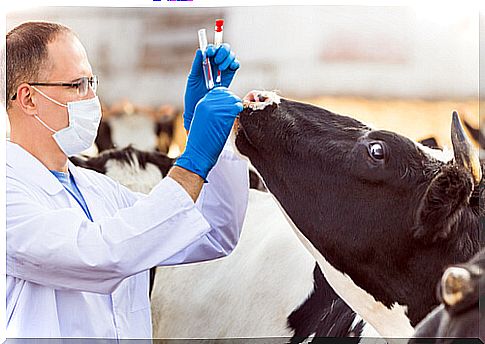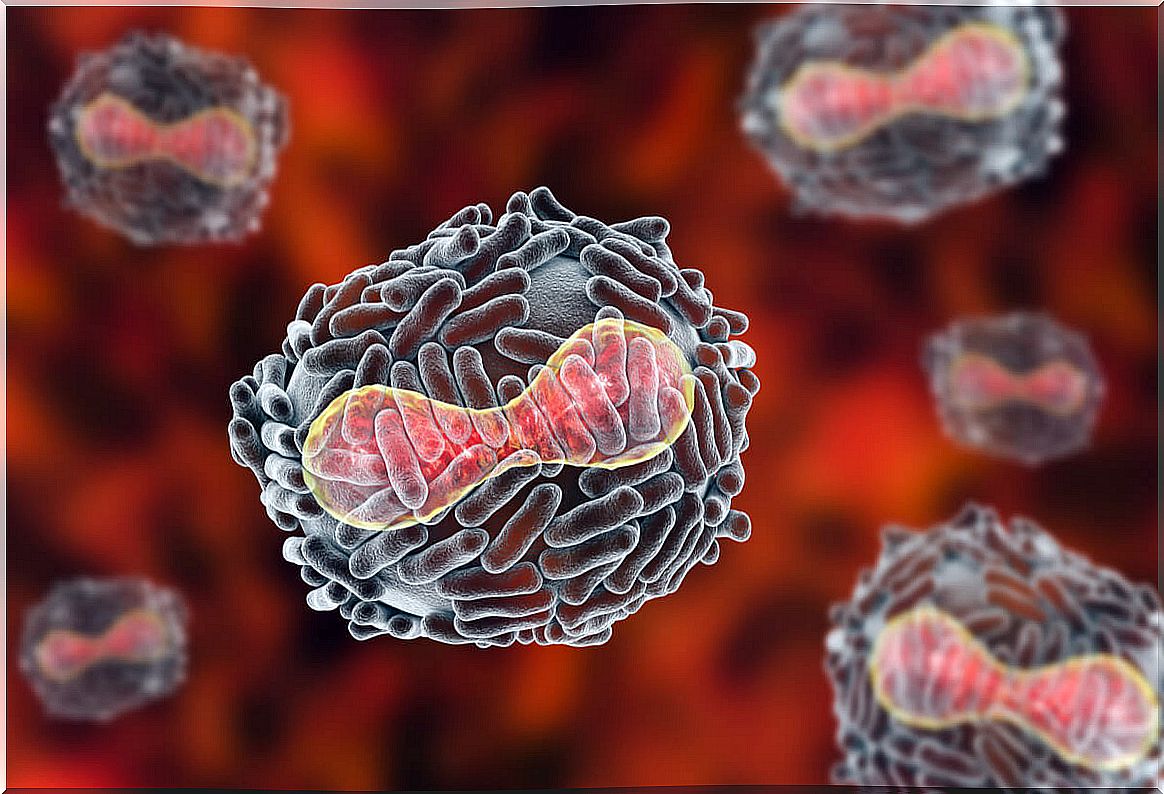Edward Jenner And The 3 Vs: Cows, Viruses And Vaccines

For many centuries, smallpox devastated mankind. Currently, we don’t have to worry about her, thanks to the remarkable work of Edward Jenner and the developments that followed his efforts.
Today, few question the legitimacy of a vaccine and fewer people still imagine the times when they were completely non-existent. It’s strange to think that we owe our thanks to a cow, a young milkmaid, an 8-year-old boy and the doctor who made a connection between them.
What is smallpox?
Smallpox is a highly contagious infectious disease caused by the variola virus. Over the centuries, it has killed millions of people across the planet.
The disease is characterized by the growth of innumerable bumps that cover the entire body of the patient. It is estimated to be fatal in 30% of cases, although this rate was much higher for hemorrhagic smallpox. Survivors were frequently disfigured by scars.
It was the most feared disease that reached all sectors of society, since even royalty suffered from it. Fortunately, since 1980 it has been considered a globally eradicated viral infection.
Smallpox is a pathology that has no specific treatment, so the only way to prevent it is vaccination. Hence the relevance of Edward Jenner, having developed this vaccine. We will tell you everything about him in the following lines.

How the father of immunology was born
People refer to Dr. Edward Jenner as the father of immunology. It should be noted that, although the practice of immunization was not new, Jenner was the first to study and document the use of a vaccine. His curious experiment has saved countless human lives.
There is a disease similar to smallpox but much less deadly: cowpox. This virus, which originates from cows, can spread to humans. It was not uncommon for milkmaids to experience mild infection. Among farmers, it was claimed that it was common for those who had contracted cowpox to be immune to human smallpox.
The cow, the milkmaid, the boy and the doctor
Jenner was 47 years old, in 1796, when a young milkmaid consulted him about a rash on her hand. Seeing the mildness of the infection and the lesions on the cow, he diagnosed her with cowpox. Jenner saw this as her golden opportunity to demonstrate the protection that vaccinia affords against the human variant.
To test his hypothesis, Edward needed someone who had never had contact with smallpox before, in the form of the human or cattle virus. His gardener’s son, James Phipps, 8, was the chosen candidate.
Jenner collected drops of fluid from the sores on the milkmaid’s hands and injected a small amount into the healthy boy’s arm. The boy became mildly ill with cowpox infection, but recovered about a week later.
2 months later, Jenner injected some fluid from a human smallpox sore into the boy. As Edward expected, the infant never got sick. To confirm her findings, Jenner went on to test the boy’s immunity. After several experiments, he proved that his hypothesis was correct.
The term vaccination is also born
Jenner soon coined the word vaccination, the root of which is derived from the Latin word vacca , which means cow. He published his research and discoveries, excited to share his success with the world. Thus, vaccination was adopted worldwide as the main strategy to prevent smallpox.
Life and career
Edward Jenner was born on May 17, 1749, in Berkely, Gloucestershire, England. His father – who passed away when Edward was only 5 years old – was a parish preacher. He received his training in Chipping Sodbury , Gloucestershire for 7 years as an apprentice to Daniel Ludlow (surgeon).
As a child, Jenner was a keen observer of nature and, in 1770, after completing his years’ surgeon training in Gloucestershire, he went to St George’s Hospital, London. There he spent his younger years studying anatomy and surgery with the well-known surgeon John Hunter.
After completing his studies, he returned to Berkeley to establish a medical practice, where he remained until his death on January 26, 1823, at the age of 73.
Legacy of Edward Jenner
Jenner’s work is widely regarded as the basis of immunology, although he was not the first to suggest that infection with cowpox confers specific immunity to smallpox. Nor was he the first to attempt smallpox inoculation for this purpose.
Vaccination against smallpox during the 19th and 20th centuries was successful and contributed to the eradication of the disease in 1977. It was achieved after a worldwide campaign (1967-1977) coordinated by the World Health Organization (WHO).
Jenner’s contribution was to use a substance similar to, but safer than smallpox, to confer immunity. Thus, he exploited the relatively rare situation in which immunity to one virus confers protection against another viral disease.

In 1881, the French microbiologist Louis Pasteur demonstrated immunization against anthrax by injecting sheep with a preparation containing attenuated forms of the bacillus that causes the disease. 4 years later, he developed a protective rabies suspension.









